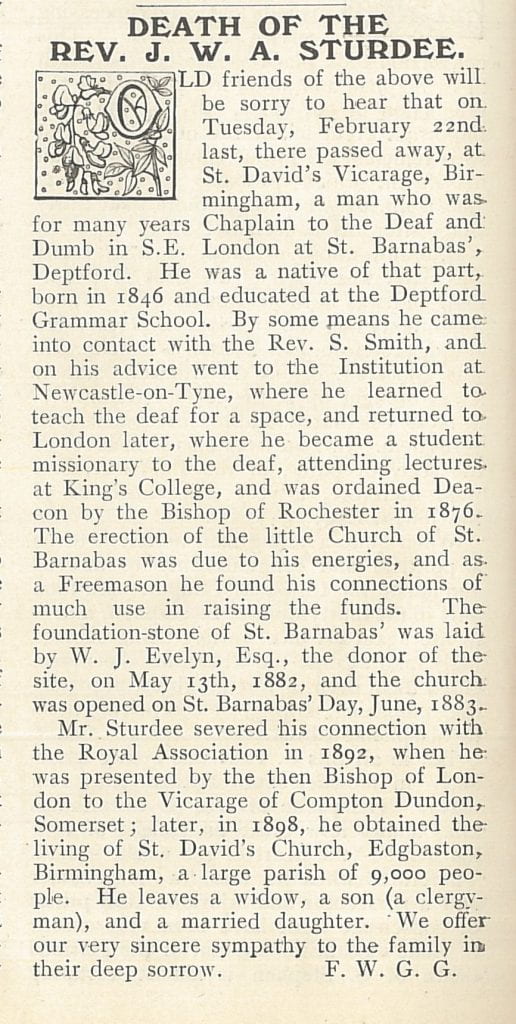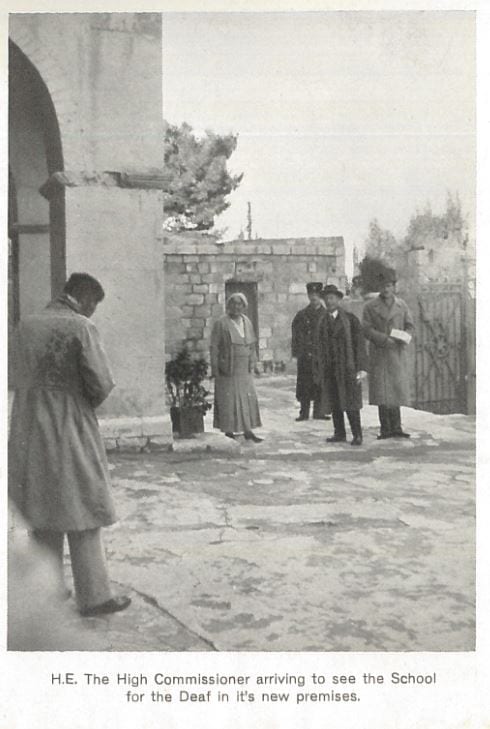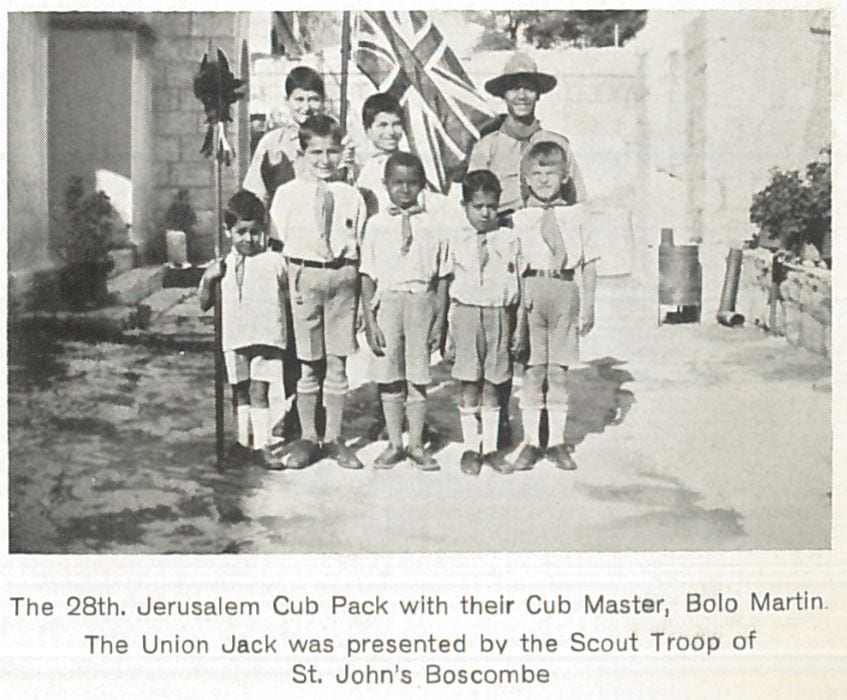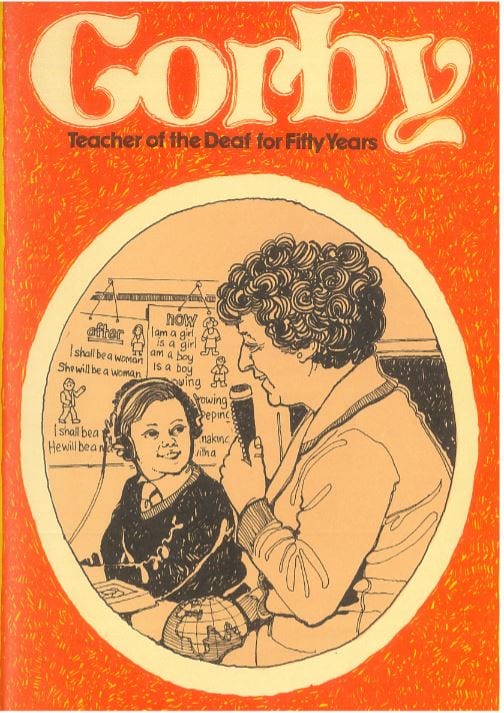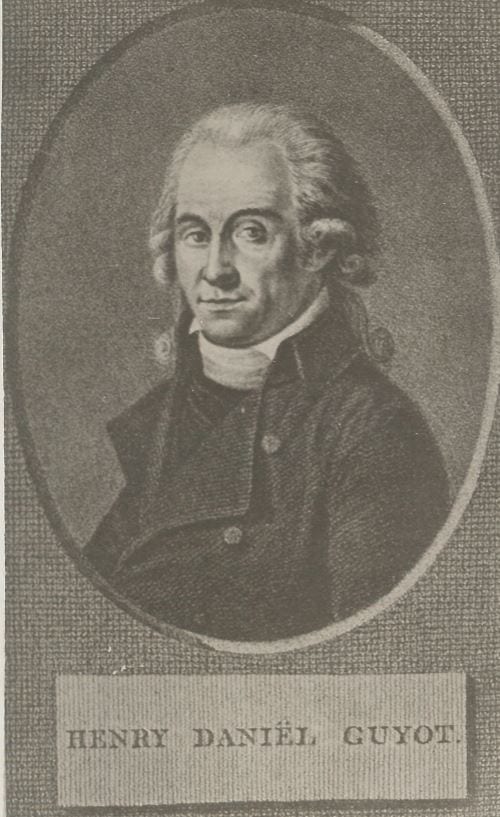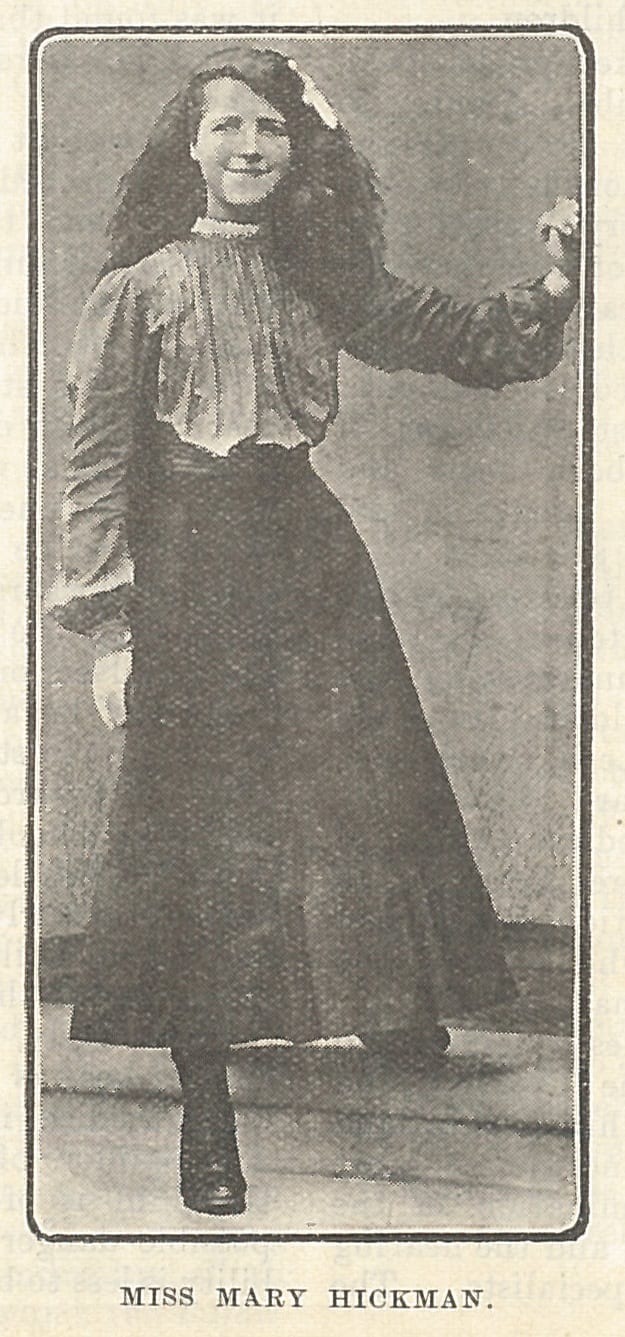“translating with a fluent ease the addresses of ordinary speakers into the silent but expressive language of signs” – Edward Townsend, teacher at Edgbaston
By H Dominic W Stiles, on 5 July 2019
Edward Townsend (1846-1933) was a teacher of the deaf who became headmaster at the Edgbaston school. He was born in Battersea, son to William Townsend, a baker, and his wife Sarah. It seems perhaps astonishing to us now, to discover that very often teachers began to learn their trade at the age of 14, as soon as they themselves had left school. Townsend was that age when he started to teach – or perhaps learn to teach – at the Doncaster Institution, under Charles Baker and along with Walter S. Bessant, who went on to become headmaster at Manchester.
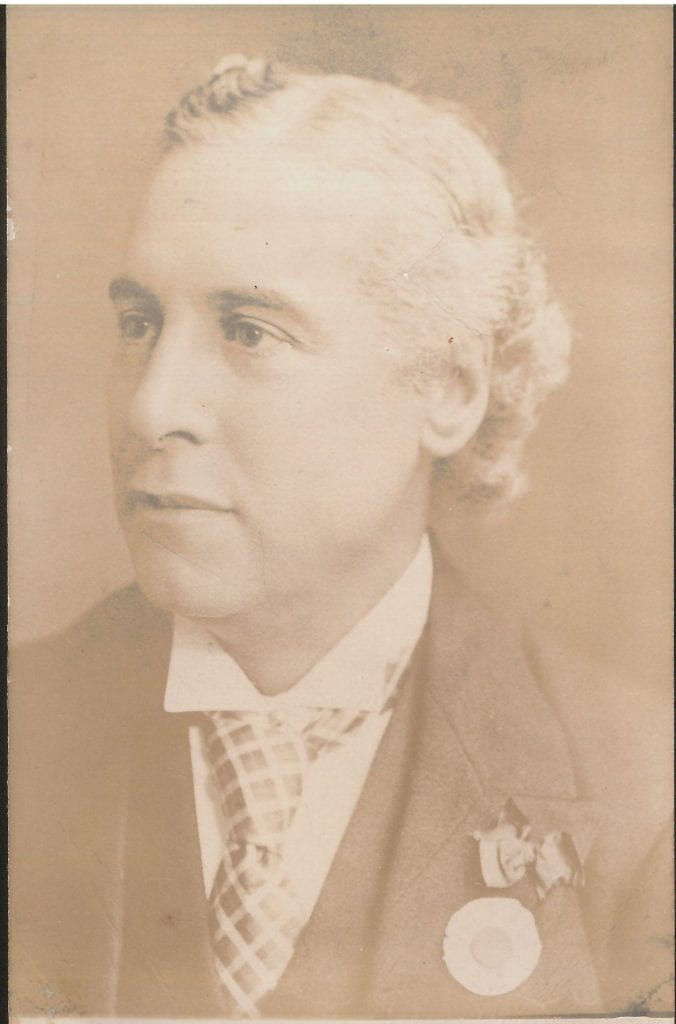 In 1895 he was interviewed by the British Deaf Times –
In 1895 he was interviewed by the British Deaf Times –
Essentially a bright engaging man, of most expressive countenance, with great command of facial expression—all the features well-defined and, even when in exaggerated play, pleasing, intelligent, and always full of animation and of purpose; he is a man of enthusiasm in his work and in the doing of it, but with the fortiter in re qualified by the suaviter in modo of cultured gentleness. The very man to teach with energy and spirit, and with expressive kindly countenance those banished children of misfortune—the isolated deaf and dumb. “How then “—after seeing some of the details of his work and system—” how then did you become associated with this special branch of education ? ” we asked Mr. Townsend, with considerable curiosity as to his reply. ” Did you apply yourself to the work from any conviction or tendency towards it, or—” ” Simply drifted into it,” is the response.
Mr. Townsend, who had of course already determined upon, and qualified himself for, an educational career, heard quite by chance that an assistant-teacher was required at the Yorkshire Institution for the Deaf and Dumb, at Doncaster. He applied for and obtained the appointment and became the assistant of Mr. Charles Baker, the head-master, and brother of the late Mr. Alfred Baker. (British Deaf Mute, p.113)
According to the 1861 census his sister Sarah and brother-in-law Joseph Jones were national school teachers. That suggests how it came to be an idea for a career. From his obituary in the Teacher of the Deaf we can say he must have been at Doncaster until he was eighteen, then spent eighteen years at the Old Kent Road Asylum, where we find him in the 1871 census. I looks as if all the teachers were bachelors, but Edward married, I think in 1871, and moved to the Margate branch of the school. In 1882 he was appointed to replace Arthur Hopper, who had died, and presided over the rebuilding of the school.
He was, according to his obituary, “not opposed to Oral Teaching,” and was a strong advocate of finger-spelling. The British Deaf Mute article also seems to stress he was – at least at that time – far from being opposed to the manual system –
Mr. Townsend is also opposed to the advocate’s for supplanting, or at least depreciating, the manual and gesture method of teaching by the undue adoption of the ” oral ” system. The “oral” system, although regarded as a novelty, is in fact identified with the earliest known efforts of communication with deaf-mutes, but this gave place in a large measure, and particularly is France and in England, to the use of gestures and the finger alphabet, and at the present time, either the manual method or what is known as the ” combined system ” is still largely employed in the United Kingdom, and also in America, where the education of the deaf and dumb is carried to a more successful issue than in any country in the world. (British Deaf Mute, p.115)

Above we see Edgbaston girls in a composition class, probably Edwardian period.
Of his fitness for the position he holds there can be, as we have said, no question. He has ability, enthusiasm, and tactical skill. The children love him and he has the confidence of all with whom he is brought into official relations. He is a member of the committee of the College of Teachers of the Deaf, and one of its examiners. He is also the vice-chairman of the National Association of Teachers of the Deaf, Dr. Elliott being the chairman. He is therefore largely in request at meetings of teachers—and of the deaf themselves, being a very Daniel to interpret visions of flying fingers to the hearing, and, vice versa, translating with a fluent ease the addresses of ordinary speakers into the silent but expressive language of signs for the benefit of the deaf. Concerning methods of education Mr. Townsend, for the present, maintains a discreet reserve. But the eclectic system—any method for good results—appears to be most in favour at the Edgbaston Institution and is meeting with encouraging success. That the school and the energetic principal, whose career we have thus faintly sketched out, will have many years of usefulness before them is our sincere hope and wish. (Ephphatha)
In the British Deaf Mute, he is quoted as defending the idea of Deaf Institutions against attacks by a eugenicist –
Mr. Townsend has quite recently controverted in toe local press a conclusion which Sir James Crichton Browne advanced in his lecture on “Heredity,” delivered in the Athletic Institution, viz. : “That the association of deaf-mutes in schools and institutions, the one in which Mr. Townsend’s charge is detrimental, because apt to encourage marriages between persons similarly afflicted, and thus tend through their offspring and the process of heredity to the production of a deaf and dumb variety of the human race.” Professor Graham Bell of telephone celebrity, was the initiator of the theory lately formulated here by Sir James Crichton Browne, but Mr. Townsend’s experience leads him to suppose that the theory is fallacious ; and that, except in very occasional instances, the offspring of deaf mutes are in possession of their normal faculties. He says, moreover, a much greater evil is consanguineous marriages, and on the occasion of our visit pointed out several pupils who were the children of first cousins and other close-blooded relationships. (British Deaf Mute, p.114-5)
Townsend retired to Bournemouth, where he died in 1933, and was buried in Witton, Birmingham.
I am grateful to www.interpreterhistory.com for showing me correspondence of Townsend with Sibley Haycock from the Cadbury Archives in Birmingham.
Edward Thompson, Ephphatha, 1897, p.8-9
Mr. Edward Townsend, The British Deaf Mute, Volume 2 no. 20 p.113-5
W.H.A., Obituary, Teacher of the Deaf, 1933 p.55
1861 census – Class: RG 9; Piece: 2198; Folio: 117; Page: 3; GSU roll: 542934
1871 census – Class: RG10; Piece: 601; Folio: 111; Page: 3; GSU roll: 818907
1881 census – Class: RG11; Piece: 985; Folio: 69; Page: 21; GSU roll: 1341234
1891 census – Class: RG12; Piece: 2360; Folio: 120; Page: 7
1901 census – Class: RG13; Piece: 2816; Folio: 43; Page: 29
1911 census – Class: RG14; Piece: 5841; Schedule Number: 215
 Close
Close





